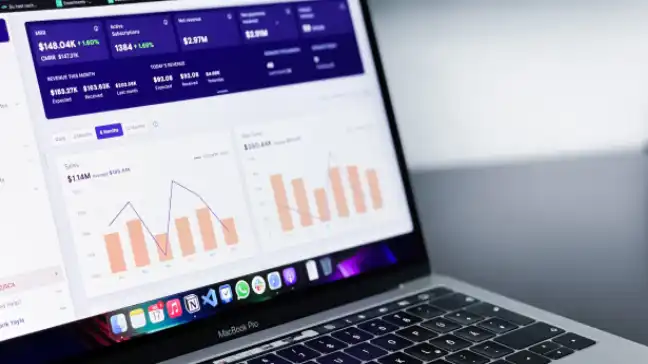So you’re interviewing for a data science role? Excellent! But you’d better be prepared, because nine times out of ten, you’ll be asked machine learning case study questions. They’re not so much about showing off your technical abilities; they’re all about getting a feel for how to approach solving a real business problem.
Table of contents
- Machine Learning Case Studies
- Metrics Design & Evaluation: How Do We Know If It’s a Win?
- Machine Learning System Design: Let’s Build Something Scalable
- Feature Evaluation & Selection: What Matters?
- Root Cause Analysis (RCA) & Troubleshooting: What Went Wrong?
- Open-Ended Product Sense/Strategy Questions: Thinking Like a Businessperson
- Final Words of Advice
Machine Learning Case Studies
Let’s work through some of the most common types of case studies and how you ace them. We will cover the common types of questions for each case study type, a framework for tackling the specific type of question, and what the interviewer is looking for.
Metrics Design & Evaluation: How Do We Know If It’s a Win?
Do you ever wonder how companies know if a new product or feature is a hit? That’s what these questions are checking. They’re looking to see if you can take fuzzy business goals and turn them into measurable decisions.
You might hear things like:
- “We’ve just rolled out a new recommendation engine on our online store. What metrics would indicate if it’s a success or failure?”
- “Let’s say you’re responsible for our search engine. What important metrics would you monitor to ensure it’s in good health?”
- “We’ve launched this new feature to get people much more engaged on our social network. How do you measure whether it’s accomplishing its mission?”
- “If you were building a fraud detection system, what are the absolute bare-must-watch metrics?”
How to Approach It:
First, get the Lay of the Land (Business Goal): Get the “why” before even thinking about numbers. Why does this product/feature/model exist anyway? What are we trying to fix? What does “success” look like in business terms? Don’t be shy – ask questions like:
- “Who’s the target audience here?”
- “What’s the value they’re receiving?”
- “What are the high-level business goals? Are we increasing sales, gaining more users, or decreasing costs?”
Brainstorm Potential Metrics:
Next, let your mind wander a little bit. Think through all the different ways that you might measure things like:
- The Money Angle (Business Metrics): These metrics will directly influence how well the business is performing – think revenue, profit margins, how frequently customers make purchases, and how long they remain loyal as customers.
- How Engaged Are They? (User Engagement Metrics): How are individuals using it? Active users per day/month, how much time they’re spending on it, what pages they’re viewing, and whether they’re using that new feature?
- How Well Does It Work? (Performance Metrics): Especially for machine learning stuff, think about accuracy, precision, recall, and how fast it’s performing.
- Is It Even Running Properly? (Health/Operational Metrics): Is the system stable? What’s the error rate? How often is it up and running? How quickly does it respond? Is it hogging resources?

Sort and Be Selective (Categorize and Prioritize):
Put all those ideas/metrics into the categories above. Then, start to cut them back. Ask yourself:
- Does this let us know if we’re reaching our most important business goal? This is the most important one.
- Is it easy enough that everybody gets it?
- Could someone easily manipulate this metric or misinterpret what it means?
Consider the Flip Side (Trade-offs and Limitabilities):
No measurement is perfect. What are the potential downsides or limitations of the ones you’ve selected? For instance, using only clicks might make you think it’s great, but maybe people click and bounce off immediately, which isn’t good for the long term.
Aim for a Balanced View (Give a Balanced Set):
Try to choose a set of measures that gives you a balanced picture of success – impact on the business, how the user perceives it, and the efficiency of the underlying system.
What the Interviewers Are Looking For:
- Do you understand the business and how data science fits into it? Can you apply data science to tangible business value?
- Can you think logically and in an organized fashion?
- Are you being realistic and choosing useful metrics?
- Can you explain your thinking clearly and why you chose certain metrics?
Machine Learning System Design: Let’s Build Something Scalable
These are the type of questions where they check if you can think like an architect. You must come up with the whole end-to-end process for a specific machine learning use case – from getting the raw data to deploying the model and keeping it running smoothly.
You might be asked to:
- “Walk me through how you’d design a system to recommend products on an e-commerce website.”
- “Design the Instagram’s For You Page?”
- “Design a system to detect online fraud transactions in real-time.”
- “How would you create a system to deliver users’ news feeds that are tailored specifically for them?”
Your Game Plan:
Pin Down the Details (Elaborate Requirements & Scope): Begin by fully grasping the problem inside and out. Questions like:
- “What kind of recommendation are we working with here? (Just similar items? User behavior-driven recommendations? Content-driven recommendations?)”
- “Roughly how many users and how much data are we expecting? Requests per second?”
- “Are there any specific limitations we should be mindful of? (E.g., budget limitations, legal limitations, etc.)”
Data is King (Data Understanding):
Talk about the data you’d need, where it would come from, and how you’d get it ready for the model.
- “What data are we able to access? (User activity, product catalogs, history of purchases?)”
- “What would we have to do to clean and get ready this data? (Handling missing values, generating new features?)”
- “How would we ensure the data is high quality and current?”
Choose a Model (& Rationale):
Choose the right machine learning model(s) for the job and explain why you chose them. Think about:
- What kind of problem are we trying to solve? (Classification? Regression? Ranking?)
- What are the features of the data? (Is there a lot of it? Is it very sparse?)
- What are the key performance requirements? (Accuracy? Speed? Interpretability?)
- What are the trade-offs? (A less complex model might be faster but less accurate, and vice versa)

Draw the Blueprint (System Architecture):
Expose all of the different elements of your system and how they’d communicate with each other. Think about:
- Getting the Data In and Stored: How is data entering the system, and where is it stored? (Databases? Data lakes?)
- Converting Data into Features: How do we convert the raw data into something that the model can learn from?
- Training and Testing the Model: How do we train the model, test its performance, and measure how well it’s doing?
- Making the Model Work (Deployment & Serving): How do we put the model that we have trained into production so that it makes predictions in real-time or batches?
- Making it Run (Monitoring & Maintenance): How are we going to be monitoring the performance of the system, discovering problems, and retraining or updating the model accordingly?
Think Big (Scalability & Reliability):
How will your system scale as the number of data and users grows exponentially? Consider:
- Horizontal Scaling: Scaling out by adding more servers to handle the increased load.
- Load Balancing: Distributing the incoming requests efficiently across the servers.
- Fault Tolerance: Having the system in such a way that even if one component fails, the system remains operational.
Rolling It Out and Making It Better (Deployment & Iteration): How would you deploy the system? (Maybe start with a small subset of users?) And how would you go about making it better in the future based on what you learn from observation and feedback?
What Interviewers Want:
- Can you think holistically? Can you envision the entire working system, not just the machine learning model?
- Are you being practical and suggesting something that may be done?
- Do you understand that there are always compromises made in system design? (Make sure you showcase this skill!)
- Could you provide a clean explanation of every different part of your system and how they coordinate with one another?
Feature Evaluation & Selection: What Matters?
These questions are to determine if a given item of data (a “feature”) provides value to your model or product, or how you go about picking the most beneficial features out of a lot to choose from.
The following are a few examples:
- “We’re thinking about adding user location to our fraud model. How do you approach testing to see if that works?”
- “We have a huge list of potential features for our model that predicts which customers will churn. How do we whittle it down to the ones that make a difference?”
- “We have a new dataset with information about users’ social relationships. How would you determine if incorporating this data would enhance our recommendation system?”
Your Strategy:
Keep the Goal in Mind: What are you trying to predict or optimize? What is the performance without this feature?
Informed Guess (Hypothesize about Feature Impact): Think about why this feature would be beneficial. Compare it to what you are trying to predict and the business goal overall.
- “Location might be useful for fraud because often fraudulent activity happens somewhere other than where the user usually is.”
- “Being aware of who someone is socially connected to could make the recommendations better because individuals tend to enjoy what their friends enjoy.”
Examine the Numbers (Quantitative Analysis):
- The Gold Standard: A/B Testing: When we can, let’s test it! “Let’s develop two versions of the model: one that takes location into account, and one that doesn’t. We can then randomly show these different models to users and see which is better at catching fraud based on our most valuable metrics.”
- Offline Testing on Historical Data: Even if you can’t perform an A/B test right away, at least you can test it out on past data.
- Compare Model Performance: Train two models, one with the feature and one without, and compare which of those best performs on your metrics of choice, e.g., AUC or F1-score. Make sure to use proper validation techniques for achieving correct results.
- Watch How Significant the Feature Is: Use techniques that enable you to know the extent to which each feature contributes to informing the model’s predictions (like permutation importance or SHAP values).

Use ‘Common Sense and Gut Feeling’ a bit (Qualitative Evaluation):
- Does It Make Sense? Does the feature logically sound like something that would be useful? Does it make sense to your understanding of the problem?
- Look at the Mistakes: Observe the areas where your model is making mistakes. Does the inclusion of this feature reduce those specific kinds of mistakes? (This is a very good aspect to call out and investigate.)
- Is the Data Any Good? Is the data for this feature good and accurate? If it’s noisy or bad, then it might degrade your model.
- Balance Costs and Benefits: What will it cost in effort to acquire, process, and keep this feature compared to how much it might improve things? Does the performance benefit outweigh by additional complexity and resources?
What Interviewers Are Truly Seeking to Find Out:
- Are you able to think analytically and design experiments to find out whether a feature is beneficial?
- Do you emphasize decision-making based on data and evidence?
- Are you advocating for practical ways of evaluating features (e.g., A/B testing or offline experiments)?
- Are you able to critically evaluate the quantitative and qualitative elements of feature evaluation?
Root Cause Analysis (RCA) & Troubleshooting: What Went Wrong?
These kinds of questions place you in a situation in which something has gone wrong (like a sudden drop in performance or some unexpected action) and ask you to figure out why it has occurred.
You might be asked:
- “Our web traffic fell 20% last week for no apparent reason. How would you go about trying to find the reason?”
- “We’ve noticed that our model for predicting fraud is no longer as good as it has been. Why could this be, and how would you find the reason?”
- “There are complaints that our application takes an eternity to load. How would you go about figuring out that issue?”
- “Why is the recommendation system for a particular group of users suddenly not working well?”
Your Approach:
Find the Complete Picture (Know the Symptom Clearly): Determine precisely what the problem is. Don’t be afraid to ask questions like:
- “When did this start happening?”
- “Is it affecting all users, or one specific subset?”
- “Are there error messages or logs available that we could investigate?”
- “Did anything occur recently? (Such as fresh code rolls, changes to our data infrastructure, or any external influences?)”
Brainstorm Potential Causes (Form Hypotheses):
Consider broadly all the potential reasons. It might be helpful to categorize them:
- Data Issues:
- Perhaps the value of our data has decreased (it’s noisier, biased, or incomplete).
- There might be an issue with our data pipelines (data is not showing up, or it’s being mapped in the wrong way).
- Our trends in the data may have changed over time in a way our model isn’t used to
- Model Issues: We may have inadvertently added the incorrect version of the model or configured it with errors.
- System/Infrastructure Issues:
- Our servers may be running at full capacity or under outage.
- There may be connectivity problems in the network. Check if all combinations of fields have been tested to ensure it is not a parameter-specific problem
- Something might be wrong with our database.
- There is something wrong with a third-party service we employ.
- External Factors:
- Maybe it’s a seasonal effect.
- Maybe there has been a completed or changed marketing campaign.
- Our competition might have done something innovative.
- There could be unintended real-world situations affecting things.

Prioritize and Investigate (Prioritize Hypotheses & Investigate Systematically):
Start investigating the most likely explanations first, based on:
- How common are these types of problems in similar systems?
- What was different at approximately the time the issue began?
- What’s the simplest thing to check first?
Examine the Evidence (Data-Driven Investigation):
- Review our monitoring dashboards for important metrics (such as website traffic, load times, error rate, and server utilization).
- Check our application logs, system logs, and database logs for error messages or unusual patterns.
- Look at recent data to see if there are any changes in the distributions, quality, or any other anomalies.
- If the problem is from a recent experiment, check the A/B test results and data for discrepancies.
Isolate the Root Cause (Identify the Root Cause): As you examine, try to isolate the problem to a specific root cause.
Propose Solutions & Preventative Measures (Offer Solutions and Prevention): Once you have identified what went wrong, suggest how to fix it and what we can do to prevent its occurrence in the future.
What Interviewers Are Looking For:
- Are you able to systematically diagnose and debug complex issues?
- Do you think logically, come up with possible explanations, and check them out in a step-by-step manner?
- Do you rely on data and logs to guide your investigation?
- Are you thinking about actual, real-world steps to correct the problem?
- Do you have a method to explain in plain language what you did while debugging and what you learned?
Open-Ended Product Sense/Strategy Questions: Thinking Like a Businessperson
These are more open questions that force you to think strategically about how data science could be used to improve a product or business.
You might be asked:
- “How could we use data science to get more people to use our mobile app?”
- “What are some ways that we could use data to make the user experience on our site more personalized?”
- “With the data we possess, what would you recommend new product features for us to add to increase users for our platform?”
- “A new feature from our competitor has been released. How would you quantify its impact and decide if we should create something similar?”
Your Approach: Show That You Know the Business and Product!
Ensure that you show that you know the company’s business model, who their target audience is, and what products they have. Feel free to ask questions clarifying the company’s goals, what issues they are facing right now, and who their main competitors are.
Pinpoint Key Opportunities and Issues:
From your knowledge, identify areas where data science can make a big difference. Consider:
- What are the most significant pain points for users? How might data science address them?
- What are the most important business objectives the company is attempting to meet? How can data science assist with those (such as growth, revenue, efficiency)?
- Where could data science give the company an edge?
Brainstorm Data Science Solutions:
Make a list of possibilities for how data science could be applied. Think outside the box! Consider various machine learning approaches and other data sources. Some possibilities are:
- Personalization: Developing recommendation systems, personalizing content, and tailoring the user experience.
- Optimization: Enhancing user paths, pricing strategies, promotions, or processes within the organization.
- Automation: Automating processes, identifying outliers, forecasting the future.
- New Products/Features: Completely new products or new features that potentially could be created based on insights through data.

Select and Defend Your Choice:
Select a few of your favorite ideas and defend why you think they are best based on:
- Impact: What business value and user benefit could it possibly deliver?
- Feasibility: Can you practically implement it based on what you have at your disposal?
- Alignment with Strategy: How closely does this idea align with the overall strategic direction of the company?
Consider How You’d Know You Were Succeeding:
For each of your proposed solutions, how would you know if it’s succeeding? What metrics would you apply?
Organize Your Recommendations: Put your ideas down in a clear and organized fashion. For each idea, tell:
- The Problem/Opportunity: What issue are you addressing, or what opportunity are you trying to grasp?
- Proposed Solution: What particular data science strategy are you proposing?
- Expected Impact: What are the projected benefits?
- Metrics for Measurement: How do you plan to measure the success of this solution?
- Potential Risks/Drawbacks: Are there any possible negatives or risks we should be aware of?
What Interviewers Want to Know:
- Do you possess good product sense? Do you understand product strategy and how data science can enable a product to be highly successful?
- Can you think strategically and recognize opportunities that could drive a significant impact?
- Are you creative and able to devise new, innovative solutions?
- Do you have business acumen and consider the business goals and feasibility of your ideas?
- Are you able to communicate your ideas and proposals logically from a business perspective?
Final Words of Advice
- Don’t Be Afraid to Ask Questions: Seriously, don’t guess. Make sure you understand the problem and the situation before writing your answers by asking smart questions.
- Talk It Out: Express your thoughts out loud. Interviewers are less concerned with the answer than they are with how you think.
- Follow a Structure: Use templates and formal methodologies for every type of question (like we just practiced).
- Ground Your Answers in Data: Always try to back up your reasoning with evidence and data. Even if you don’t have actual data, explain how you would use data to make your choices.
- Acknowledge Trade-offs: Recognize that there are few, if any, ideal solutions. Argue the possible trade-offs and limitations of other approaches.
- Keep the Business Context in Mind: Data science is all about solving business problems. Always remember, in the back of your mind, the business implications of your responses.
- Practice, Practice, Practice: Work through as many practice case study questions as you can locate on websites like Interview Query, Exponent AI, LeetCode, and Glassdoor. Mock interviews are also very helpful.
- Be Concise and Clear: Organize your answers sensibly, express them in plain, clear language, and present the major points at issue concisely.
You got this!





